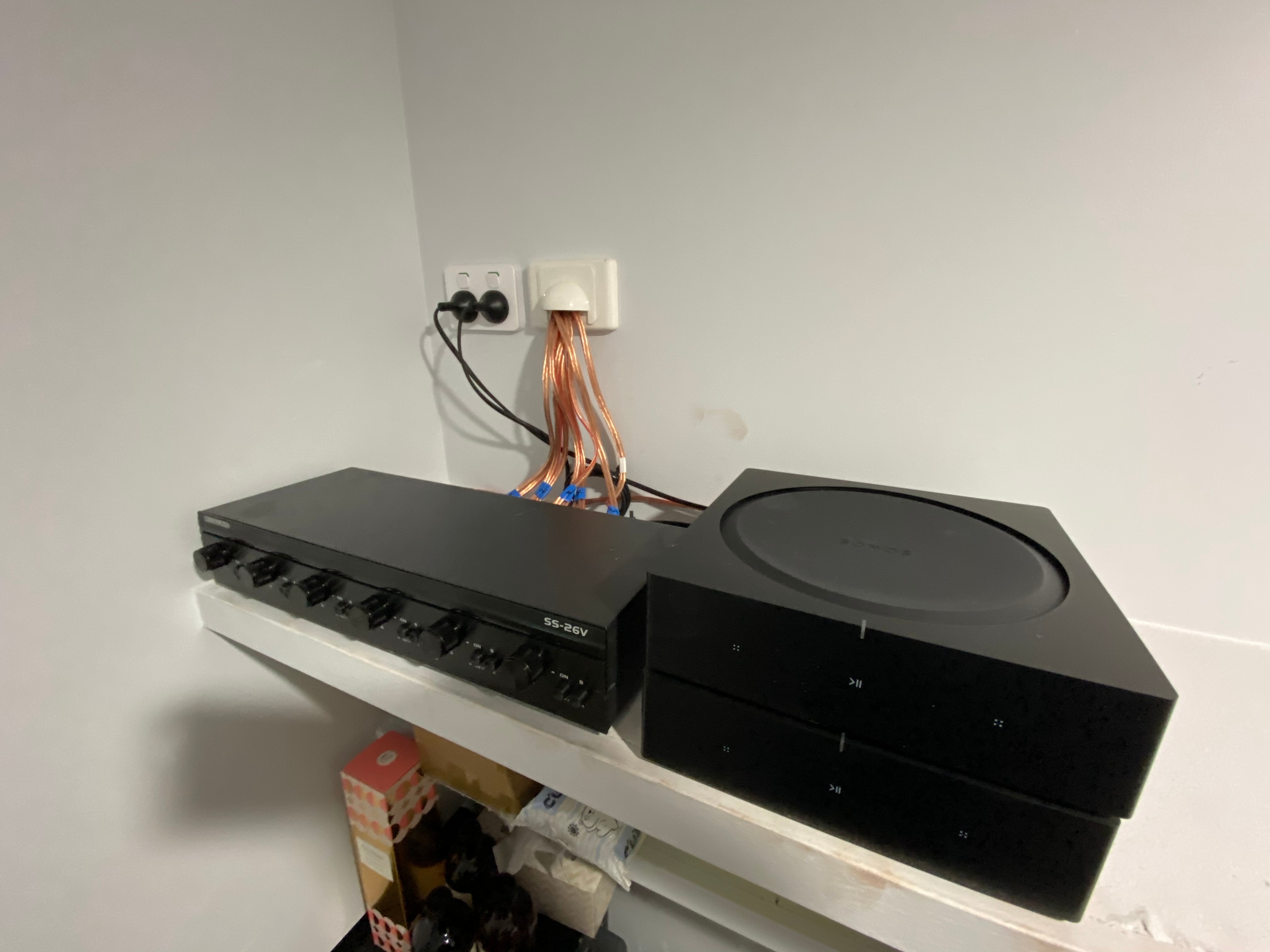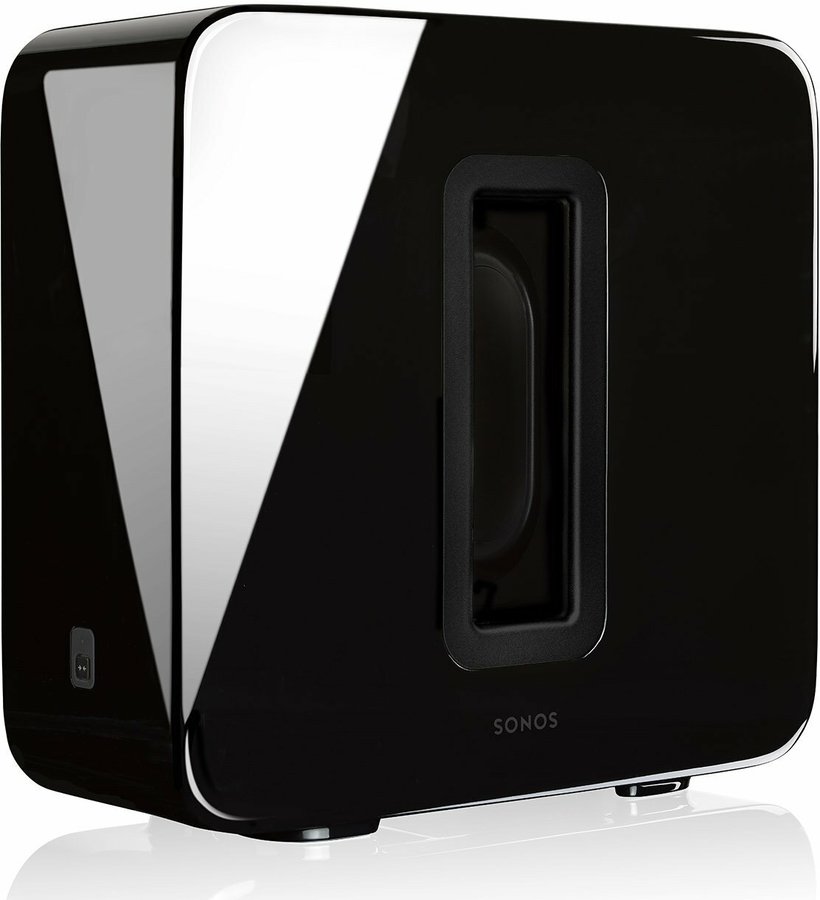

That said, the Sub still delivered a nice sense of punch and drive, especially in the upper bass region.
#SONOS SUBWOOFER FULL#
But it wasn't the tightest rendition of "Ranking Full Stop" I'd heard - the pitch definition in the bass seemed a tad soft and the sub had a trace of the "high-Q" sound often heard from small subs that need to deliver an impression of power. And that doesn't mean pushing it to the edge the system still sounded distortion-free even cranked all the way up. I was impressed that the Sub, in combination with the Play:3, could easily play loud enough to get people dancing at a party. The pumping, danceable bass line of the English Beat's "Ranking Full Stop" (from I Just Can't Stop It) told me right away.


Still, approximately 54 square inches of moving diaphragm isn't a recipe for raw bass power, so I wondered if and how Sonos might tune the Sub to best exploit its limited resources.
#SONOS SUBWOOFER DRIVERS#
Two 4.5-by-7-inch drivers may not seem like a lot of audio real estate, but it's actually slightly more area (although probably a little less total displacement) than a typical 8-inch woofer. However, despite the adjustment procedure, the bass level still needed occasional tweaking, as I'll discuss below. I mated the Sub with a Play:3, and the operation took less time than it would take to hook up and adjust a conventional subwoofer. Then it plays the same tone and asks you to set the level so the bass sounds full but not overwhelming. First it plays a multitone bass pattern two ways, and asks you to choose the louder of the two. The Sonos app then takes you through a simple adjustment procedure for the sub. Once your system finds the Sub on the wireless network, you tell it what Sonos component in what room you want it to mate with. You just push a button on the sub, a little LED starts blinking, then you search for new components using the controller app running on your computer or smartphone. Setup à la SonosĪs with other Sonos components, you go through a simple config to assign the Sub to a certain room and a certain Sonos component, like a Play:3 or a Play:5. The only wire required is the AC cord, although you can use a wired Ethernet connection if you wish. It uses the same wireless network as the other gear. Nor would anyone blame you if you assumed the Sub connects to other Sonos components with a wire, but it doesn't. In fact, its director of engineering product management is Chris Kallai, formerly of Velodyne and thus well-versed in good bass reproduction. Unlike a lot of companies that make compact audio systems, Sonos has its own acoustical engineering team. No one will blame you if you're thinking the Sub is a function-follows-form design created by a lifestyle-oriented company that doesn't know low bass from largemouth bass, but you'd be wrong.
#SONOS SUBWOOFER DRIVER#
Each driver has its own Class D (switching-type) amplifier, of unspecified power. At just 6.2 inches thick, it slips easily into small spaces - certainly under most end tables, maybe even under a couch.Įach driver is in its own ported enclosure the ports fire into the same central cavity as the drivers. (I wonder if the aesthetics were inspired by Paris's Grande Arche.) You can stand it up or lay it flat. The Sub's design is a little weird, with two 4.5-by-7-inch "racetrack" drivers facing each other across a central cavity, a design that cancels vibration. Just to recap the way Sonos works: All components communicate through Sonos' own wireless network, which streams music independently of your main wireless network the Sonos system also connects to your Wi-Fi router so it can accept commands from your smartphone or computer, retrieve music stored on your networked computers and hard drives, and reach the Internet to access numerous streaming services. I was lucky enough to get a pre-ship sample for review. Yesterday, the company introduced the Sonos Sub, a $699 subwoofer designed to work seamlessly with any Sonos system. Plug in a Sonos component, go through a simple config, and you have great-sounding music and Internet radio in any room (or many rooms) in a matter of minutes, all controlled by your smartphone or computer.īut there's one thing a Sonos system doesn't deliver: bass. Since my first lengthy experience with Sonos products, I've been recommending them as a simpler, lower-cost alternative to traditional multiroom audio systems.


 0 kommentar(er)
0 kommentar(er)
